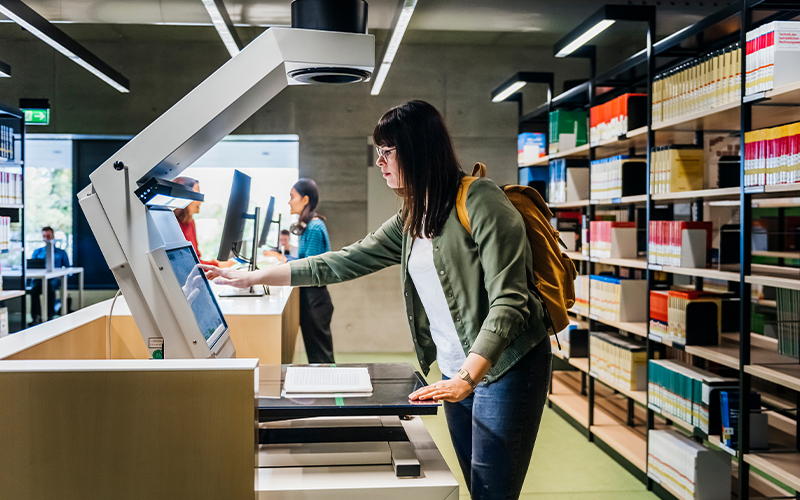While every child deserves a world-class education, reality bites differently. Economic and social conditions, access to good schools, infrastructure problems, and costs are some of the reasons that excellence in education is limited to a few. During the pandemic, an estimated 1.6 billion children were locked out of school, and many children did not have access to alternate opportunities to learn. The problem is magnified when it comes to special needs students, who are often side-lined when it comes to specific requirements for learning. Special needs individuals are those people who face difficulties such as learning challenges, speech impairment, physical challenges, emotional or behavioural differences. Apart from their specific challenges, such children often must adjust to environments that can be demanding even on the best days. In terms of education, schools and universities need to become inclusive in every aspect. If we want an equitable future, learning environments need to be comfortable for and accessible to every kind of student. Inclusive education needs to be a priority in every educational institution.
Reimagining the inclusive classroom
According to the Imperial College of London, “inclusive learning and teaching recognises the entitlement of all students to a learning experience that respects diversity, enables participation, removes barriers and anticipates and considers a variety of learning needs and preferences”. Every student needs to feel equal and valued and be able to participate in society, culture, and academics. While there are legislations in several countries for inclusive education, there is a lack of consistency in terms of identification, assessment and services provided to students. Here are some strategies that promote inclusive education.
Make learning accessible to all
Typical classrooms usually provide a single method of learning and assume that all students are of equal ability. Students with physical challenges may require special access to classrooms (think ready availability of spacious elevators and ramps in all buildings). Support diverse learning styles by going beyond textbooks to support visual and auditory learning. Providing learning material that supports braille, enlarged print or tablets will help visual learners or people with visual impairments and/or challenges. Images and/or videos played on smart boards help people with all types of learning styles and support auditory learners. For people with learning disabilities and reading challenges, using text-to-speech (TTS) can help overcome barriers. Teachers are often the first people to spot differences in learning, and using digital tools to track student challenges and learning styles can help streamline and identify issues that help in early intervention.
Use assistive EdTech
As already proven during the pandemic, technology is a big boon to the entire education sector. Providing a quality education becomes easier with unlimited digital resources, assessments and feedback mechanisms, and collaborative environments, to name a few. Assistive technology helps provide blended learning environments, which are important for students who have limited access to physical classrooms. Tablets, mobile devices, and computers with e-learning software can help students participate in interactive learning in a safe environment. Virtual classrooms and digital whiteboards help establish collaborative learning. Assistive technology can also provide augmentative and alternative communication (AAC) for students who have verbal challenges and need to participate in behaviour intervention plans (BIP). Such technology results in better student engagement, supplements the teacher-led material and accelerates learning for students with special needs.
Create an inclusive pedagogy
Students come from diverse backgrounds. Language in the learning material and that used in the classroom should be inclusive. Images and videos should consciously include people from different cultures and ethnicities, have adequate representation of various gender identities and sexual orientations, and avoid any offensive terminology and slang. The learning material should encourage discussions on social justice and equity, and inclusive practices, and also avoid references to sensitive or biased historical topics. Physical and virtual environments should be set up as safe zones where every student feels safe to express their opinions. Classroom rules should be clearly stated with behavioural standards, and consistent consequences. Teachers should create spaces where students can practise empathy. Global competence should become a priority, where students are encouraged to explore and understand different cultures, communicate their ideas, and imbibe diverse ideas and perspectives. Stereotyping and unconscious bias should be discouraged. Educational institutions should themselves practice diversity, equity, and inclusion (DEI) by recruiting a diverse workforce.
True inclusion in education is a tall order, but not an impossibility. Government policies and legislation would certainly assist the inclusion mandate. Educational institutions can partner with digital learning platforms* to provide the right assistive technology. A people-centric, inclusive approach will lower the barriers and provide equitable education opportunities for all students.
* For organizations on the digital transformation journey, agility is key in responding to a rapidly changing technology and business landscape. Now more than ever, it is crucial to deliver and exceed on organizational expectations with a robust digital mindset backed by innovation. Enabling businesses to sense, learn, respond, and evolve like a living organism, will be imperative for business excellence going forward. A comprehensive, yet modular suite of services is doing exactly that. Equipping organizations with intuitive decision-making automatically at scale, actionable insights based on real-time solutions, anytime/anywhere experience, and in-depth data visibility across functions leading to hyper-productivity, Live Enterprise is building connected organizations that are innovating collaboratively for the future.








